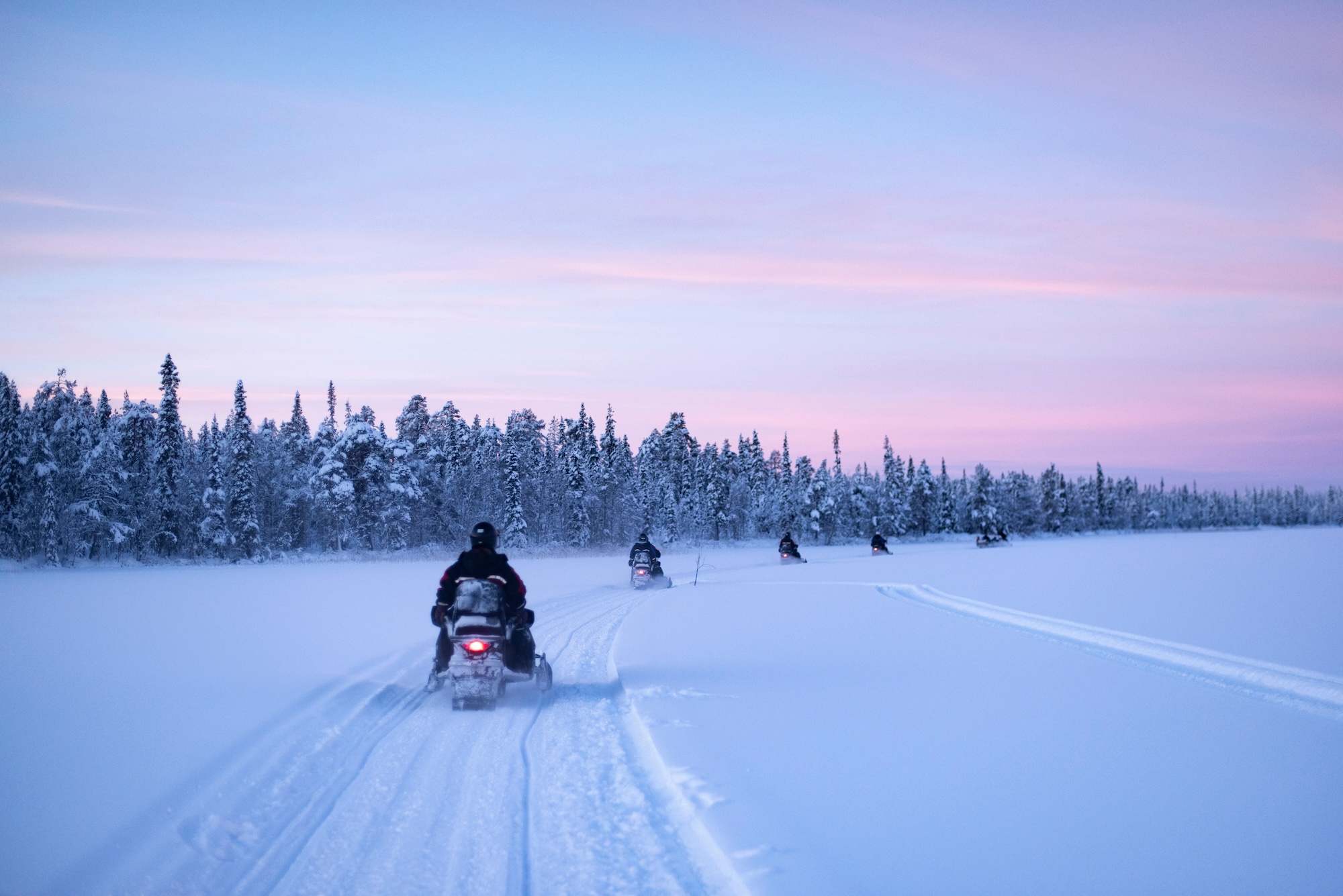One of the best parts about winter is the vast transformation it has on the landscape. Just think about it: the lakes and rivers just completely freeze up, offering a unique playground for adventure seekers all throughout Canada. One of the more popular winter activities would be ice riding, whether it be on a snowmobile or ATV; this opens up a thrill of possibilities!
But you need to keep in mind that it also has its own set of challenges and safety considerations. So before you jump into ice riding, it’s a good idea to first explore the risks and some essential tips so you can count on having a safe and enjoyable experience!
The Thrill of Ice Riding
What’s the deal with ice riding? Is this actually fun? Well, just as ice skating can be pretty fun, you can think of this as exhilarating; you’re getting a much bigger thrill than ice skating could ever give you, and with ice riding, there are two ways to do it!
Snowmobile Adventures
As frozen water bodies become a solid winter wonderland, this just brings snowmobiling to a whole new level, a dimension even! The vast, smooth expanse of ice allows for high-speed rides, offers freedom, and allows you to explore a space that’s inaccessible in the winter months. How incredible is that?
ATV Excursions
For those seeking a different kind of adventure when it comes to ice riding, ATV is what you could call a rugged experience. The solid ice is a challenging terrain; it’s something unique, especially if you’re an off-road enthusiast.
Safety First
Yes, before you can have fun, there needs to be some safety that gets put into account. So let’s dive into everything you need to know so you’re not only comfortable during ice riding, but you’re entirely safe too.
Ice Thickness Assessment
When it comes to both ATVs and snowmobiles, the ice needs to be thick enough. If it’s not thick enough, then you just can’t do it. So, there needs to be a minimum of four inches of clear ice, which is generally considered safe for a person on foot. When it comes to vehicles, a thicker layer of ice is needed; it’s best if it’s around 10 inches- the recommended amount. Use an ice auger or consult local authorities for accurate measurements because you don’t want to make the horrid mistake of taking your vehicle out on thin ice.
Safety Gear
You’ll need to equip yourself with appropriate safety gear; this includes a buoyant snowmobile suit, helmet gloves, and ice picks. In case there’s an accidental break through the ice, these are going to be life-saving items.
Keep an Eye on the Weather
The weather itself is going to play such a huge role in ice riding safety. You’ll need to avoid venturing onto frozen bodies of water during thaw or when the temperature rapidly changes. Make sure to look at the local weather forecasts and plan your ride accordingly.
Communication Devices
It’s up to you whether you want to use old-fashioned two-way radios or mobile phones, but you need to stay connected with your riding companions in case emergency communication is needed.
Know the Terrain
You’ll also need to familiarise yourself with the terrain if you haven’t already. This includes looking into potential hazards like pressure ridges, ice cracks, and any areas that have thin ice. You need to avoid risky areas and plan this strategically, and this is the best way.
Emergency Preparedness
You need to expect the unexpected and prepare for it, too. So make sure you have a basic emergency kit on it, including a first aid kit, ice picks, throw rope, and a small tool kit in case of minor repairs.
Environmental Considerations
When it comes to ice riding, something else that needs to be considered is the environment. While the great outdoors can be fun, you still need to be cautious.
Respect Wildlife
Even when the rivers and lakes are frozen, these still serve as a habitat for wildlife. Avoid destroying their natural habitat.
Leave No Trace
You need to preserve the pristine beauty of winter landscapes, so make sure to waste and dispose of everything properly.
Legal Considerations
Since these are still vehicles, you can count on some laws and regulations that you need to be aware of.
Know the Regulations
Chances are fairly high that there are some regulations within your locality; some areas may have restrictions or specific guidelines in order to protect the environment.
Obtain Permits
Depending on where you are, there is a fairly high chance that you’ll need a permit. These are all needed to help manage recreational winter activities.
Throttle Down, Chill Up, and Conquer the Ice!
Exploring frozen lakes and rivers through ice riding offers an unparalleled winter adventure! From the thrill of speeding across ice-covered expanses to the careful consideration of safety measures, it’s just all incredible, right? But this doesn’t need to be a distant dream as Snowmobile financing in Canada exists, so you can finally finance the winter adventure of your dreams! So gear up, ride responsibly, and let the icy adventure begin!

Comments